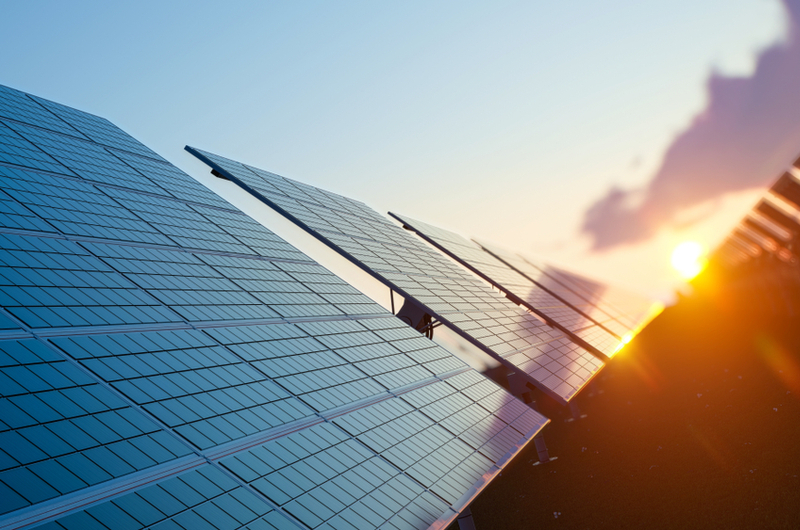Best Portable Solar Panels To Buy Now
Discover the benefits of using portable solar panels. Find out more about several of the best portable solar panels for RVs, camping and hiking.Solar panel technology has greatly involved since it was first introduced. Previously, one of the greatest criticisms of solar panels was the overall bulky size of the panels, making them difficult to set up. In 2021, solar panels are much smaller and sleeker, with the panels now small enough to carry with you. Many portable solar panels are small enough to clip directly onto your belt or store in a pocket.
Portable solar panels are an excellent way to charge products on the go. The smaller solar panels are often used for charging laptops and cellphones. Larger variants are used to provide electricity at a campsite, charge a car battery or help power an RV. These portable solar panels are not only energy efficient and environmentally friendly, but they generate almost no noise, making them superior to bulky electricity generator.
Different Types of Portable Solar Panels
There are three primary types of portable solar panels. The first type are monocrystalline panels. These panels are built with a single silicon crystal. In terms of energy efficiency, monocrystalline panels are considered the best. These panels yield a high amount of power, even in minimal sunlight conditions. They are also much more durable, since they have less parts than other varieties of panels. For all of these strengths, monocrystalline panels are often the most expensive.
The second type of panel is polycrystalline. These portable solar panels are most commonly associated with RVs. Polycrystalline panels are made from multiple silicon blocks. They are often treated as the baseline for portable panels. While they do not have any unique strengths, they are affordable and efficient.
The final type of panels are amorphous. Amorphous panels are the largest of the portable panels. Amorphous panels are the least expensive due to their larger size and minimal power yield. These types of panels are commonly used by campers, since they are well suited for running multiple appliances, like powering portable cooking equipment and charging phones.
Renogy Monocrystalline Portable Foldable Solar Panel Suitcase
Renogy’s solar panels are easily recognized by their unique, suitcase appearance. The panels are surprisingly light, with the suitcase containing two 50-watt monocrystalline panels. The panels have a 10-foot cable and a waterproof charge controller. With a full charge, it is capable of providing around 500-watt hours each day. The price varies between $250 and $400, depending on where you purchase it. Because of the waterproof design and ease of portability, these panels are commonly used by campers or taken on RV trips.
If you want something with more power, Renogy also has an excellent starter kit designed specifically for RVs. The starter kit can support up to 400 watts, coming with an initial 100-watt panel. The long cable allows you to set up the panels in the sunlight while you park and enjoy the shade. It only takes a few hours of sunlight to fully charge the panels. It comes standard with a negative grounding controller as well. The monocrystalline panels weigh about 20 pounds, but are not foldable. The starter kit is normally around $150 to $200.
Zamp Solar 120P
Zamp’s products are normally associated with larger monocrystalline panels used to power a home, but there are several portable panels as well. Zamp Solar 120P easily produces between 30 and 40 amperes each day, which is more than enough to run even the largest of RVs. It is compatible with both 12V and 6V batteries as well, making it easy to connect to any system. It is one of the heavier panels, weighing close to 40 pounds, but it can be folded up for easier transport. The panels perform well even under cloudy condition, using an anti-reflective system to help absorb light and provide continual energy. The panels are normally priced between $550 and $700.
Solar Chargers
Solar charges are a tiny solar panel commonly used by hikers and campers. These chargers only weigh a few pounds and are often flexible, making them easy to carry or strap to your equipment. They do not have enough power for anything as large of an RV, but are good for basic appliances.
-
GoerTek’s solar charger is great for hiking or camping trips because it features three separate charging ports, allowing multiple uses to charge their phones, laptops, cameras or tablets at once. The panel comes standard with 36 LED lights, making it easy to access at night. Not only is it small and easy to carry, but it weighs less than two pounds. It is quite affordable as well, normally costing between $35 to $50.
-
Anker’s portable charger has a unique, compact design, allowing it to wrap around a backpack or attach to a camping tent. It produces 21 watts and has two separate ports. It is one of the lightest portable solar chargers available, weighing less than a pound thanks to the weather resistant polyester canvas. It is another reasonably priced portable solar panel, commonly costing $40 to $75.
-
Nekteck also has a high-quality solar charger. Nektek’s portable charger contains three monocrystalline panels. While it is normally small, it can be folded up to easily fit inside of a backpack. It boasts an impressive IPX4 waterproof rating, which means it repels both liquids and dust. It contains dual USB outputs and offers faster charging than other products. On average, it is between $60 and $90.
